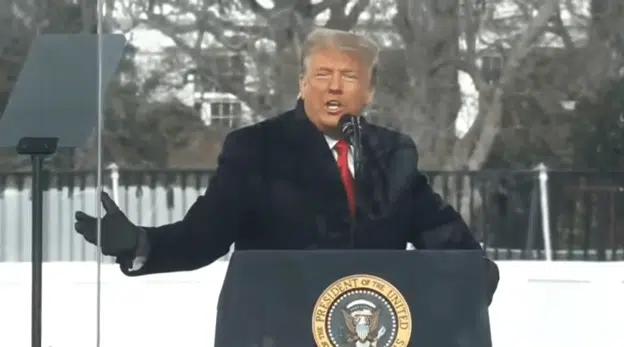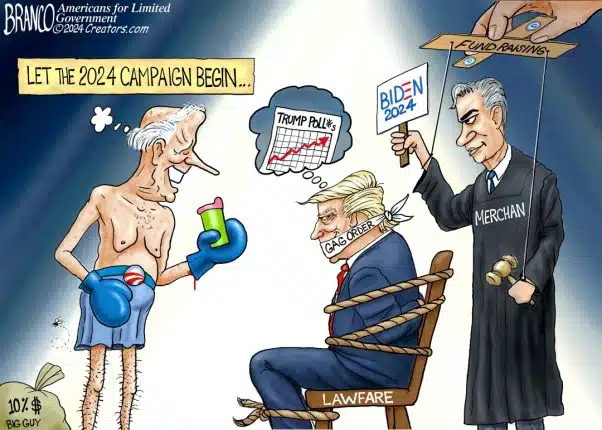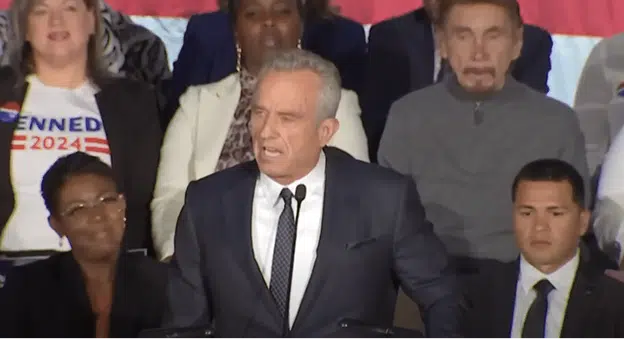NRD Editor’s Note: This column originally appeared at onminesafety.com.
By James Sharpe — Dr. Greg Wagner has left MSHA, but his departure has not stopped a swirl of controversy surrounding the nature of his employment or the amount he was paid during his 32-month detail to the Agency from NIOSH.
According to a NIOSH official, the Department of Labor (DOL) approached NIOSH seeking Wagner’s health expertise in helping to draft a proposal to tighten MSHA’s existing rules on respirable coal dust. Chronic exposure to elevated levels of coal dust can cause coal worker’s pneumoconiosis, and Wagner, a physician, is considered an expert in the field. At the time, Wagner was working on NIOSH’s WorkLife Initiative in the Boston area.
NIOSH agreed, and on July 29, 2009 Wagner joined MSHA at its national headquarters in suburban Washington, D.C. as Deputy Assistant Secretary for Policy.
That raised eyebrows for several reasons. First, federal agency policy jobs at the deputy assistant secretary level are typically filled by appointees with strong political ties to the President. Just months before, Wagner’s wife, Emily Spieler, had served on DOL’s transition team for the incoming Obama Administration, so inevitably observant political junkies hypothesized a connection.
The sense that politics was at play was heightened because Wagner ostensibly joined the Agency to help write a rule, thus it seemed a more suitable position for him would have been among the rule writers in MSHA’s Office of Standards, Regulations and Variances.
His eligibility was also questioned. “How can he, as a federal employee, take a political position?” a retired MSHA employee wondered.
Then there was the issue of his compensation. During his tenure, no fewer than seven interagency agreements (IAAs) were signed between the two organizations to formalize his financial arrangement.
Under terms spelled out in a reimbursable memorandum of agreement (MOA) that was part of each IAA, MSHA agreed to pay up to $177,000 of Wagner’s current annual salary. But, as a physician, Wagner was being paid more. According to the NIOSH official, the Office of Personnel Management (OPM) told MSHA it had no authority to pay the physician’s premium. As a result, NIOSH agreed to pick up that part of Wagner’s wages.
“NIOSH did this as an act of support for a sister agency,” the official said.
In 2010, the physician’s bump amounted to $59,571, bringing his total income that year, which included the MSHA portion, to $236,571. The figures in 2011 were $59,995 and $236,995, respectively.
The setup led to some misunderstanding. Earlier this year, an allegation surfaced that Wagner was getting full salaries simultaneously from the Institute and the Agency. We published a short article April 30 to try and set the record straight.
The agreement, which the NIOSH official said had OPM’s blessing, called for MSHA to reimburse NIOSH and for NIOSH to issue Wagner’s paychecks. The deal also included a “standard overhead” reimbursement of 9% to NIOSH’s parent, CDC. “Federal agencies are required by law to recover costs associated with providing services to other agencies,” CDC spokesman Thomas Skinner explained.
Apparent Overpayments
The IAAs, which we obtained through a Freedom of Information Act (FOIA) request, appear to show that payments MSHA made to NIOSH substantially exceeded its obligation.
Both the IAAs and their attached MOAs provide independent dollar amounts that are not entirely consistent, creating a challenge in determining accurate reimbursement figures. It also leaves one wondering about the quality of federal bookkeeping. In any case, regardless of whether the figure was pulled from the IAA or from its accompanying MOA, amounts did not match a salary payment of $177,000 a year.
Using figures from the IAA forms and deducting the 9% fee, we calculated that MSHA paid NIOSH $208,046 per year for Wagner’s salary. Over the 32-month period, this comes to an overpayment of $137,600. The picture is even worse if only the MOA data are considered. Here, we calculated that MSHA’s annual salary payment came to $252,340, with the total overpayment ballooning to $200,931.
Adding the NIOSH reimbursement, Wagner would have earned $267,617 under the IAA scenario in 2010; $268,041 in 2011. Using the MOA numbers, his salary would have been $311,911 in 2010; $312,335 in 2011. Another $206,000 comes from wage totals for the five months Wagner worked at MSHA in 2009 and for the first three months of 2012. Thus, including benefits, the federal government’s total investment in Wagner during the period he was at MSHA approached $1 million.
We provided a copy of the IAAs to a former MSHA employee who has knowledge of government policies. Irate after seeing them, he accused MSHA of using the IAAs “to bastardize the system,” and added, “This is a mess. Stop and think about it. They’re paying more than a half million dollars for a little bit over two years’ work for a position [for which] they could have paid less than $177,000.”
Travel Reimbursement
Language in the MOAs provides that MSHA would reimburse all of Wagner’s travel expenses related to work on the Agency’s behalf. Wagner took a number of business trips around the country, and his expenses were reimbursed.
But MSHA also paid airfare and ground transportation expenses for some 48 trips Wagner took to his home in the Boston area while he worked for the Agency. Some of this travel occurred in conjunction with Agency business. By our calculation, MSHA paid a total of about $22,500 for his trips home, or approximately $475 per trip on average, based on travel vouchers we obtained through a separate FOIA request.
This brought another complaint from the former MSHA employee. “When you are on detail, you don’t get to go home every two weeks,” he said.
The travel vouchers themselves are equivocal on the issue, though. The voucher for Wagner’s first trip home states, “In accordance with DOL travel regulation 1-715, he is allowed to return to his official duty station for a weekend at Government expense after being in travel status at least 12 days, provided a round-trip at Government expense has not been made in the same 12 day period.” This statement seems to be supported by a note contained in a spreadsheet provided with the vouchers, which read, “entitled to trip home every two weeks while on detail.”
Yet Wagner got the okay to fly home on three successive weekends in October 2011, the last in conjunction with a conference. Three successive home visits also took place in November/December 2009, the latter two in conjunction with black lung events. He officially left the Agency in March 2012, but vouchers show no further home travel after Oct. 24, 2011.
In contrast to voucher verbiage allowing biweekly travel, language in a voucher from a trip taken over the weekend of Oct. 30-31, 2010 states, “Travel to employee’s home is not allowed.” That voucher was approved nonetheless, as were all the others.
A key issue relates to his “official duty station.” The voucher language above suggests it was Boston. Yet every home travel voucher listed “Washington, D.C.” as his duty station. Government policy generally does not allow reimbursement for home travel from an individual’s duty station.
To further muddy the water, the vouchers also consistently described his “Agency Travel” as “TDY,” government-speak for “temporary duty.” Federal employees on TDY status typically are paid per diem; however, neither MSHA nor NIOSH paid Wagner’s per diem expenses.
“They’re trying to have it both ways,” an MSHA official said.
That official was also intrigued when told about a comment in a voucher for local travel that included an $18 tab Wagner submitted for reimbursement. The receipt was for a cab ride from DOL headquarters in downtown Washington, D.C. to MSHA offices in Arlington, VA on Jan. 20, 2011. As justification for the expense, this statement appeared: “Van unavailable to take traveler back to MSHA from DOL.” According to the official, the van is to be used for mail deliveries only; any other use is illegal.
His observation raises the question of Wagner’s method of travel between MSHA offices and Ronald Reagan Washington National Airport on his trips home and how these were expensed. No requests for reimbursement for this transportation appear in the vouchers. That leaves two reasonable possibilities: either he was given a ride at taxpayer expense; i.e., in the van or similar government vehicle, or he provided his own transportation or used publicly available options, but did not turn in his expenses. The latter explanation seems less likely because Wagner showed no reluctance to submit his taxi expenses in Boston, which added about $3,500 in total to his home visit travel expenses.
Changes Begin
Near the end of last year, things began to change for Wagner. As mentioned, after October, there were no more travel vouchers authorizing a trip home. Effective Jan. 1, Wagner was given a new title of “Special Policy Advisor” and a new position description. An MSHA employee said he thought the title was a first for the Agency.
That month, MSHA also released a new organizational chart that stripped Wagner of two of three program centers he had had under the previous reorganization. Speculation arose that he was on his way out, a rumor confirmed two months later when Wagner left to rejoin NIOSH. An individual who claims to have a friend in a high place alleged that the changes coincided with heat MSHA was starting to get from Capitol Hill about Wagner’s long-running tenure at the Agency and his compensation.
Two individuals with knowledge of the MSHA-NIOSH agreement said the arrangement “stinks to the high heaven.” Every story has at least two sides. Unfortunately, MSHA did not make anyone available on four days’ notice so we could hear theirs, despite being told we intended to publish an article. Until that happens, we’ll hold our fire.
Article appeared in the September 2012 issue of the mining safety and health newsletter Sharpe’s Point: On Mine Safety. Copyright 2012, Sharpe Media, LLC. All Rights Reserved.







